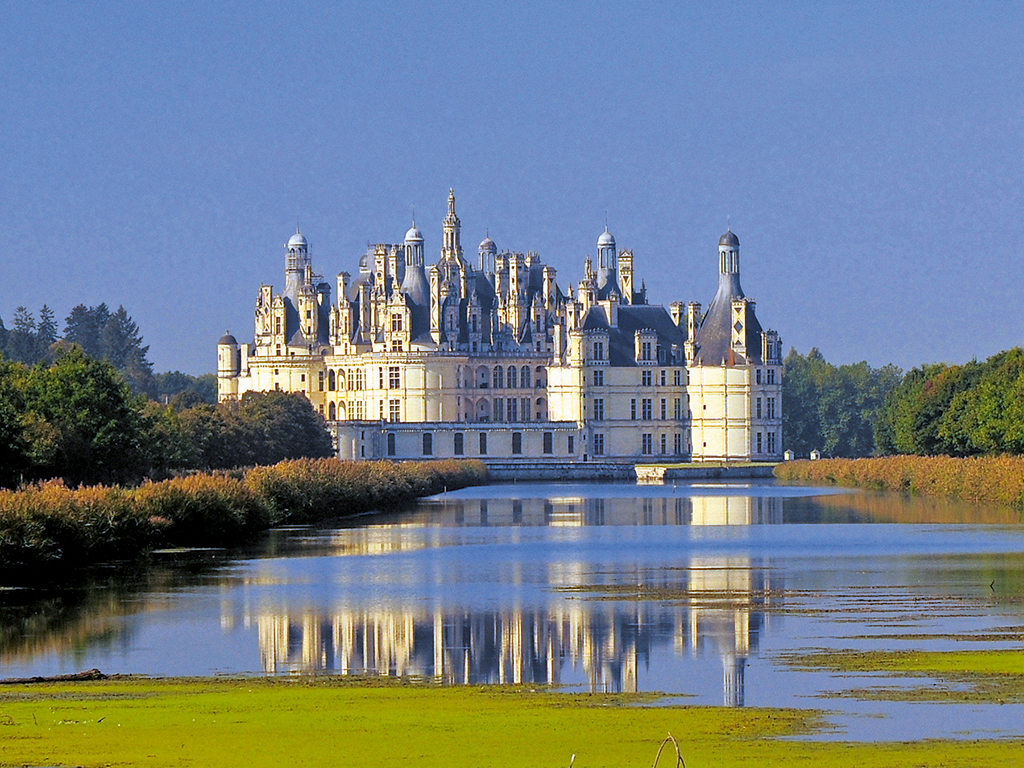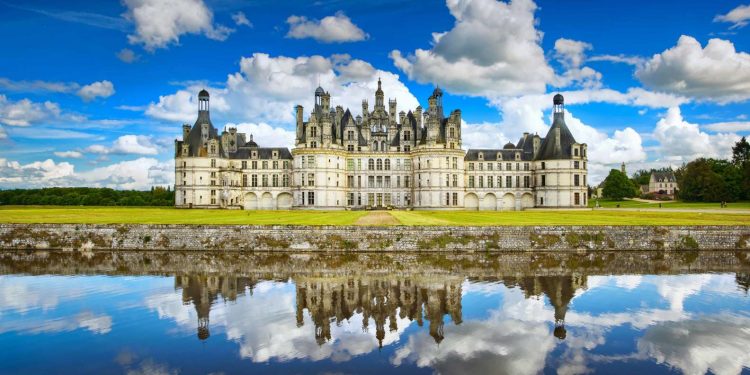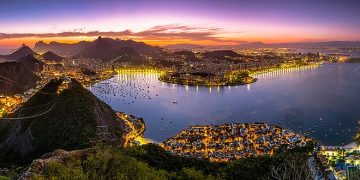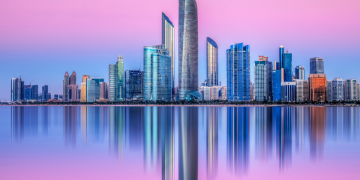In the vast territory of France, the Loire Valley, with its unique geographical location, rich historical and cultural heritage and charming natural scenery, has become a famous tourist destination in France and even the world. This river winding in central France not only nourishes all living things on this land, but also breeds the splendid culture and modern civilization of France. Explore the geography, history, culture, economy and tourism of the Loire Valley, the cradle of French culture and the source of fine wine.
First, geographical overview: blue ribbon on the plain
The Loire River originates from the Severn Mountains in the western border of France, from east to west through central France, and finally into the Atlantic Ocean, a total length of about 1,000 kilometers, is the longest river in France. The Loire Valley is located in the plain basin of the middle reaches of the Loire River and covers an area of about 27,500 square miles, spanning the provinces of Loiire, Anjou, and Main-Loire. Its flat terrain, fertile soil and mild climate offer exceptional conditions for agriculture and the wine industry.
Unlike the traditional image of the valley, the Loire Valley is not sandwiched between two mountains, but flows on a vast plain. On both sides of the river, delicate hills are dotted among them, and ancient castles are hidden in the green trees, like a beautiful picture. Most of these castles were built during the Middle Ages and the Renaissance, witnessing the vicissitudes of French history, and also adding endless cultural heritage and historical charm to the Loire Valley.

History: The royal back garden and the cradle of culture
The history of the Loire Valley dates back to ancient times. As early as the Roman period, it became an important agricultural area, where viticulture and winemaking began to flourish. With the settlement of the French royal family, the Loire Valley gradually became the summer resort and residence of the royal nobility. Successive French Kings and nobles built many magnificent castles and gardens here, such as Chambord Castle, Chenonceau Castle, Amboise Castle, etc. These castles not only reflect the highest achievement of architectural art at that time, but also witness the glorious chapter of French history.
The Loire Valley was not only the royal garden, but also the cradle of French culture. Here, gave birth to many outstanding writers, artists and thinkers, such as the father of the modern novel Rabelais, female writers George Sand, Proust, Balzac and so on. Their works are deeply influenced by the natural scenery and human environment of the Loire Valley, full of love and admiration for this land. In one of his works, Balzac described the Loire Valley as follows: “There lies a valley, beginning at Montbazon and extending to the river Loire. The mountains on both sides are rolling, the ancient castles on the mountains are scattered, and the whole valley is like an emerald cup…”
Iii. Cultural heritage: a world-class artistic treasure house
The Loire Valley is rich in cultural heritage and is listed as a UNESCO World Heritage Site. Not only are there many historic castles and gardens, but there are also many fine churches, museums and art centers. The magnificent religious buildings such as Bourges Cathedral and Chartres Cathedral not only show the exquisite skills of French medieval architecture, but also carry profound religious cultural connotations. In addition, the Loire Valley is home to 65 museums and 70 parks and gardens, offering visitors a rich artistic and cultural experience.
Among the many castles in the Loire Valley, Chambord is undoubtedly the most famous. The castle is famous for its magnificent size and exquisite decoration, and is an outstanding example of French Renaissance architecture. Chenonceau Castle attracts the attention of countless tourists with its unique water architecture style and rich historical stories. Amboise Castle is all the more remarkable because of its inextricable relationship with Gouda Vinci. Da Vinci spent the last three years of his life here, leaving behind many valuable manuscripts and works of art.
Iv. Wine Industry: The third largest wine producing region in France
The Loire Valley is not only the cradle of French culture, but also one of the important wine regions in France. The climatic conditions here are superior and the soil types are diverse, providing a good environment for the growth of grapes. The Romans planted vines here more than two thousand years ago; Since the 5th century AD, the wine industry in the Loire Valley has gradually emerged and flourished to this day. Among them, Anjou and Saumur are among the most famous wine regions in the Loire Valley.
The Anjou region is known for its diverse soil types and microclimatic conditions. The wines produced here range from the fresh elegance of white wines to the rich richness of red wines. Chenin Blanc and Cabernet Franc are among the most famous grape varieties in the Anjou region, and they produce rich, layered wines that are loved by wine lovers. The Saumur region is famous for its light white wines and rich red wines. Chenin Blanc wines here are generally aged in oak barrels, retaining the fresh fruit and delicate taste of the grapes themselves.
The wine industry of the Loire Valley is both historic and innovative. Shortly after the establishment of the AOC system in France, the Loire Valley region also established its own AOC system, which strictly regulated and supervised the winemaking process and quality. Today, the wine of the Loire Valley has gone abroad and become a beautiful business card of French wine.
V. Natural scenery and tourism experience
The natural beauty of the Loire Valley is equally intoxicating. The four seasons here are distinct and the climate is pleasant. Whether it is the sea of flowers in spring or the maple leaves in autumn, people will linger. Visitors can stroll along the banks of the Loire River to enjoy the views; You can also take a boat trip to feel the peace and distance of the river. In addition, the Loire Valley has many beautiful forests and lakes for tourists to hike, bird watching, picnic and other outdoor activities.

For those who love culture and history, the Loire Valley is a treasure trove of culture. Visitors can visit castles and museums to learn about French history and culture; You can also participate in various art activities and exhibitions to feel the charm and passion of art. Here you can listen to the story of Da Vinci and feel the glory of the Renaissance; You can also taste the mellow aroma of French wine and experience the romance and elegance of French life.
- Economy and Industry: a dynamic area for diversified development
The Loire Valley is not only a cultural tourist destination in France but also an important pillar of the French economy. The region is rich in agricultural resources and industrial base agro-food processing industry is one of the pillar industries of the regional economy. The beef, poultry, milk and other products produced in the Loire Valley are well-known in the French and European markets and make a great contribution to the local economy. In addition, the region has developed industrial sectors such as leather, textiles, shipbuilding and aviation, which provide strong support for local employment and economic growth.
In terms of tourism, the Loire Valley is the shining pearl of French tourism. Every year, millions of domestic and foreign tourists are attracted to tourism, which has driven the development of local accommodation, catering, transportation and other related industries. In order to promote the sustainable development of tourism, the Loire Valley region also actively promotes the concept of eco-tourism and sustainable tourism, advocating tourists to respect nature, protect the environment and jointly maintain this beautiful land.
Conclusion: The Loire Valley – the eternal French Garden
Loire Valley with its unique geographical location, rich historical and cultural heritage and charming natural scenery has become a famous tourist resort and cultural treasure house in France and even the world. Here you can feel the profound heritage and historical charm of French culture; You can also taste the mellow and elegant French wine; You can also enjoy the peace and beauty given by nature. The Loire Valley is like a melodious melody flowing through the ages telling the story and legend of France. With the continuous development of tourism and people’s pursuit of a better life, the Loire Valley will continue to attract more and more tourists with its unique charm and vitality to visit and experience the eternal French garden and the habitat of the soul.





















